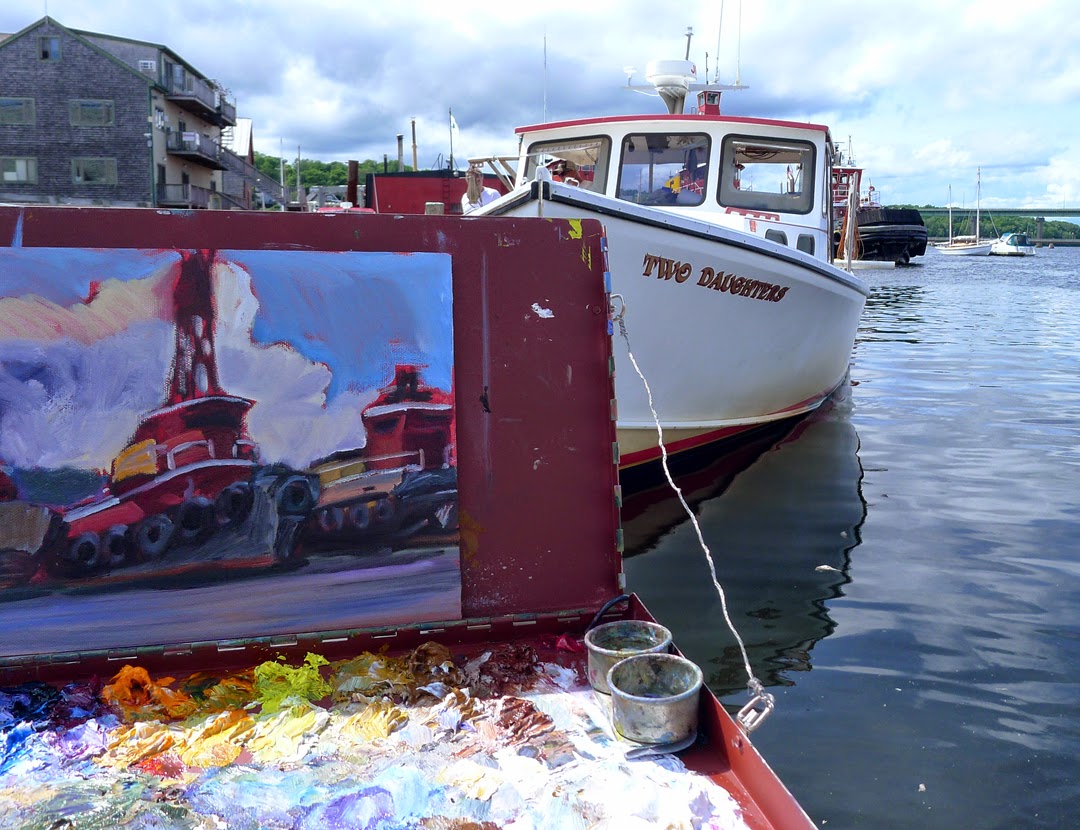 |
| Red Truck at the Lumberyard, 10X8, oil on canvasboard, sold. |
Saturday, I did Waldoboro’s Paint the Town with a student. It was his first plein air event and his painting sold. “The true gift of the evening was the buyer telling a story about how much it reminded her of a very special time with her mom,” his wife said.
I have sold seven paintings in the last six days. That’s enough to establish some kind of idea about what sells. And what sells is relationship—painting which are universal enough to capture the imagination, but specific enough to evoke a response. A painting can be technically perfect but anodyne and unmoving.
 |
| The Three Graces, 10X8, oil on canvasboard, $300, available through Camden Falls Gallery. |
Of course, a painter can’t predict what will be meaningful for his audience. All he can do is paint his own feelings and reality.
On Friday, I painted some of the amazing wooden boats that were in Camden Harbor for the Camden feeder of the Eggemoggin Reach Regatta. To paint sailboats from the deck of another boat has been a lifelong dream of mine, so I was ecstatic. And then it got better. Howard Gallagher, owner of Camden Falls Gallery, took me out on his own boat to see the start of the race. Words cannot express how ethereally beautiful and moving it was.
 |
| Evening Reverie, 8X6, oil on canvasboard, sold. |
All in all, I painted The Three Graces in a state of great happiness. I hope that comes through in my painting, and I hope that translates to something important for its future buyer.
 |
| Maine Morning, 8X10, oil on canvasboard, sold. |
Camden is high-intensity and highly social. Waldoboro is small, relaxed, and raffish. I went there expecting to know nobody except Loren. So it was funny that I ran into a bunch of painters I know (Ian Bruce, Daniel Corey, Michael Vermette, and Laurie Proctor-Lefebvre) and I met a Facebook friend in real life for the first time (Becky Whight).
Sorry, folks. My workshop in Belfast, ME is sold out. Message me if you want a spot on my waitlist, or information about next year’s programs. Information is available here.



















